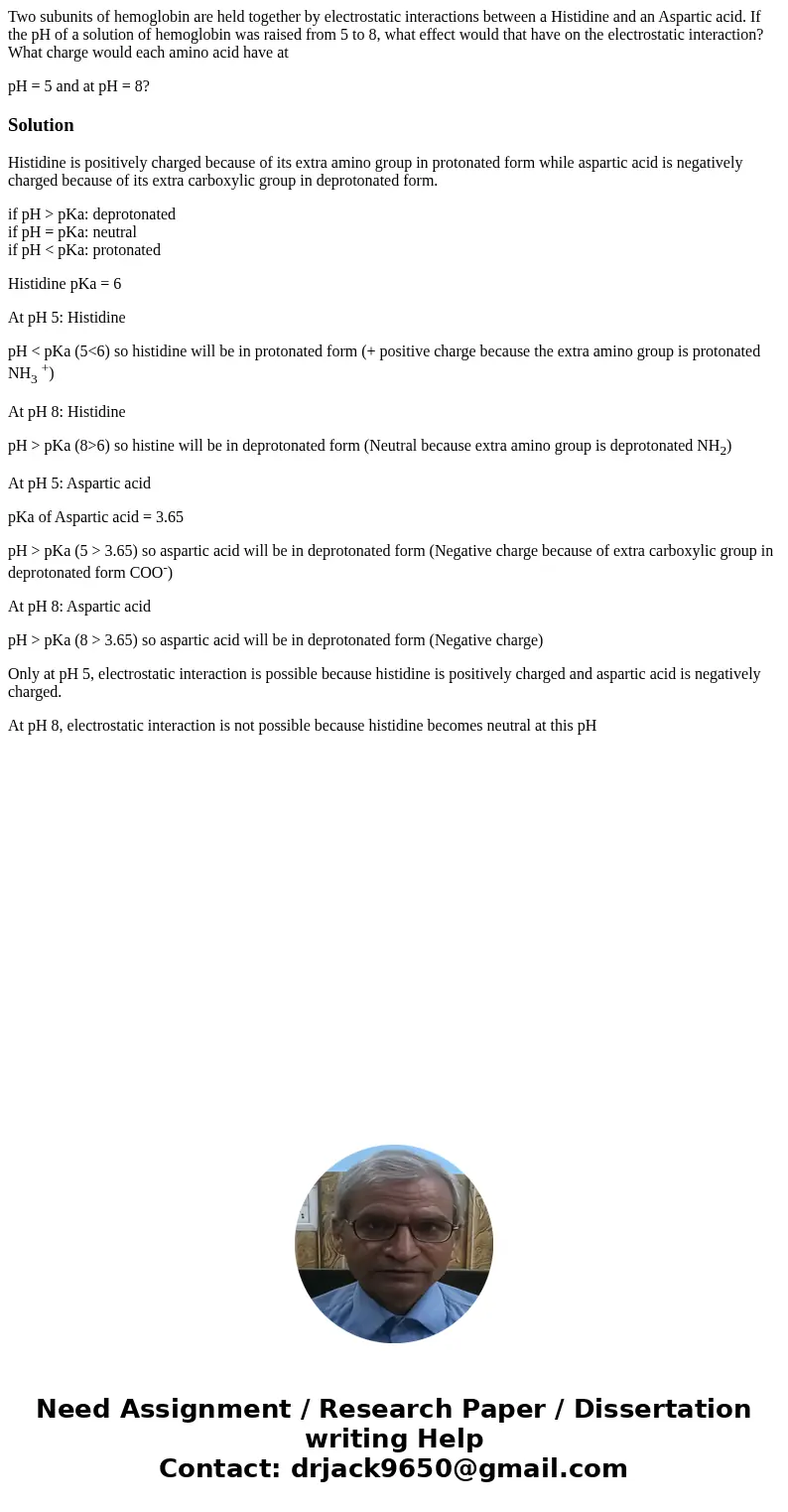Two subunits of hemoglobin are held together by electrostati
Two subunits of hemoglobin are held together by electrostatic interactions between a Histidine and an Aspartic acid. If the pH of a solution of hemoglobin was raised from 5 to 8, what effect would that have on the electrostatic interaction? What charge would each amino acid have at
pH = 5 and at pH = 8?
Solution
Histidine is positively charged because of its extra amino group in protonated form while aspartic acid is negatively charged because of its extra carboxylic group in deprotonated form.
if pH > pKa: deprotonated
if pH = pKa: neutral
if pH < pKa: protonated
Histidine pKa = 6
At pH 5: Histidine
pH < pKa (5<6) so histidine will be in protonated form (+ positive charge because the extra amino group is protonated NH3 +)
At pH 8: Histidine
pH > pKa (8>6) so histine will be in deprotonated form (Neutral because extra amino group is deprotonated NH2)
At pH 5: Aspartic acid
pKa of Aspartic acid = 3.65
pH > pKa (5 > 3.65) so aspartic acid will be in deprotonated form (Negative charge because of extra carboxylic group in deprotonated form COO-)
At pH 8: Aspartic acid
pH > pKa (8 > 3.65) so aspartic acid will be in deprotonated form (Negative charge)
Only at pH 5, electrostatic interaction is possible because histidine is positively charged and aspartic acid is negatively charged.
At pH 8, electrostatic interaction is not possible because histidine becomes neutral at this pH

 Homework Sourse
Homework Sourse